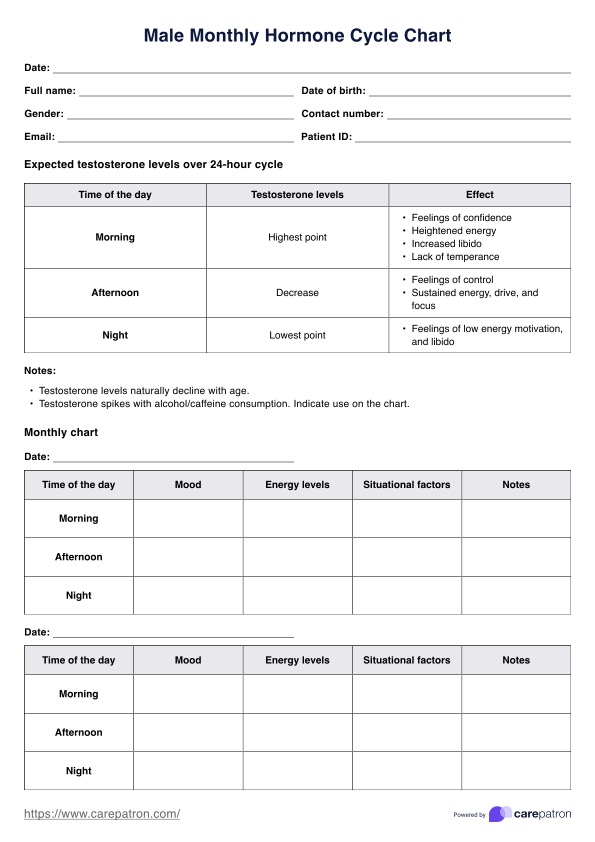Male Monthly Hormone Cycle Charts aren't commonly requested as the male hormone cycle spans 24 hours compared to the monthly cyclic nature of the female hormone cycle. A medical professional such as a doctor or counselor may wish to activate this charting resource for their patient.

Male Monthly Hormone Cycle
Use this male monthly hormone cycle chart to help your male patients track their 24-hour hormone cycle, long-term for their overall well-being.
Male Monthly Hormone Cycle Template
Commonly asked questions
This is a fantastic tool for a medical professional to offer as a means of education and informative mood tracking for male patients displaying concern over their energy levels, libido, or mood.
A Male Monthly Hormone Cycle Chart is used predominantly by the patient to educate themselves and see patterns in their daily testosterone changes so that identification of recurring changes in mood, energy or libido (strongly governed by testosterone) can be addressed and act as a first step for further intervention if needed.
EHR and practice management software
Get started for free
*No credit card required
Free
$0/usd
Unlimited clients
Telehealth
1GB of storage
Client portal text
Automated billing and online payments











